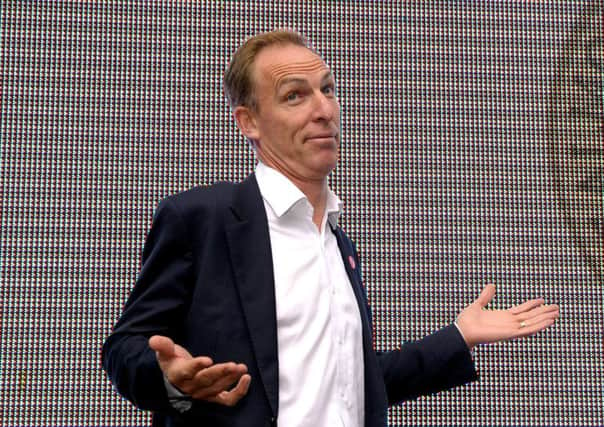Leaders: Whoever leads Labour has bridges to build


MP Mr Murphy is the clear favourite to defeat his MSP colleagues in the contest, which comes as the SNP continues to enjoy remarkable poll ratings despite the referendum defeat. His supporters point to a track record in government and a high profile – he is one of very few Scottish Labour politicians to be widely recognised by voters – as key factors in why they believe Mr Murphy’s victory in this leadership election is crucial.
But even if he is elected with the enthusiastic support of a clear majority of party members, Scottish Labour has not yet begun to climb the mountain that lies before it. Whoever takes over from Ms Lamont will inherit a party on its knees.
Advertisement
Hide AdAdvertisement
Hide AdWhile the SNP’s membership has soared to around 100,000 since September’s referendum, Scottish Labour has fewer than 14,000 paid-up members. And as Alex Salmond generates headlines with his announcement that he plans to return to Westminster next year, Labour leader Ed Miliband struggles to gather momentum for his pitch to become the next prime minister.
CONNECT WITH THE SCOTSMAN
• Subscribe to our daily newsletter (requires registration) and get the latest news, sport and business headlines delivered to your inbox every morning
Mr Miliband is no great friend of Mr Murphy’s (Mr Murphy was a key figure in David Miliband’s campaign to become Labour leader) but he is known to favour his candidacy. Mr Miliband fears that the SNP could defeat enough Scottish Labour MPs to thwart any chance that he might emerge from the general election as leader of the largest party, and he believes that Mr Murphy’s leadership north of the Border represents the best chance of preventing that happening.
This might not make for the most auspicious beginning to their working relationship, but a pragmatic marriage of convenience will have to do. There are many more bridges for the new leader of Scottish Labour to build, most importantly between the party and the electorate.
It was once said that the Labour Party could stick a rosette on a monkey in some Scottish constituencies and the creature would walk the election. Those days are long gone; now Labour can scarcely consider a single constituency to be safe.
So Mr Murphy – or Mr Findlay, or Ms Boyack – must realise that to have any chance of a meaningful revival in Scotland, the party’s message must respond to the wishes of voters. The political landscape in Scotland has changed almost beyond recognition in the past 20 years – the referendum result was a sign of that longer process. If Scottish Labour’s new leader can take the party to the people, with a message that fits the more powerful parliament that Scots have demanded, then the SNP may have a fight on its hands.
How we learned to ‘like’ politics
IT’S official. It didn’t just seem impossible to escape debate about Scottish independence this year, it was impossible.
Not only did our towns and cities fill with campaigners, and windows across the land become festooned with Yes and No badges and posters, but the referendum was the most talked-about subject by UK-based users of the world’s most successful social network, Facebook.
Advertisement
Hide AdAdvertisement
Hide AdAccording to the company’s own data, Scottish independence was more talked about in the UK on Facebook than even the football World Cup.
In the five weeks before 18 September, there were more than ten million Facebook interactions concerning the referendum. On the day itself, as Scots voted, there were 3.3 million interactions, 1.9 million of which took place in Scotland.
Of course, the internet is not the real world. It is one thing to “like” a political cause and quite another to take to the streets to deliver leaflets and knock on doors. But it is abundantly clear that people want to talk about politics more than they have for a very long time.
Political parties have long since cottoned on to the potential for campaigning that social media offers. First Minister Nicola Sturgeon is an enthusiastic – and prolific – user of Twitter, where she is just as likely to offer her opinion on the last crime novel she read as she is to discuss policy.
Anything that engages as many people as possible in our national discourse has got to be worthy of support. The referendum showed a widespread engagement in politics that had been sadly lacking as disillusionment and cynicism grew. We cannot let the greater engagement we saw then just disappear.
SCOTSMAN TABLET AND IPHONE APPS